Speakers
David Wilner

David Wilner is a Senior Astrophysicist at the Smithsonian Astrophysical Observatory, a Lecturer on Astronomy at Harvard University, and in 2010 became the Associate Director of the Radio and Geoastronomy Division of the Harvard-Smithsonian Center for Astrophysics. He studies the origins of stars and planets, mainly using interferometric techniques at radio wavelengths to obtain high angular resolution. He received his A.B. in Physics from Princeton University, his Ph.D. in Astrononomy from the University of California, Berkeley, and held a NASA Hubble Postdoctoral Fellowship at the Harvard-Smithsonian Center for Astrophysics prior tojoining the research staff. His recent research has concentrated on resolving the structure of disks around young stars, to probe the physics of planet formation.
James Di Francesco
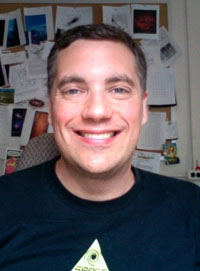 James Di Francesco has over twenty years experience in millimetre and submillimetre astronomy. His research focus is the observational characterization of the earliest phases of star formation using single-dish and interferometric telescopes. James has been an NRC staff member in the Millimetre Astronomy Group for the past 13 years. Previously, he obtained his PhD at the University of Texas in 1997, and spent his postdoctoral years at the Harvard-Smithsonian CfA (1997-1999) and the University of California, Berkeley (1999-2002).
James Di Francesco has over twenty years experience in millimetre and submillimetre astronomy. His research focus is the observational characterization of the earliest phases of star formation using single-dish and interferometric telescopes. James has been an NRC staff member in the Millimetre Astronomy Group for the past 13 years. Previously, he obtained his PhD at the University of Texas in 1997, and spent his postdoctoral years at the Harvard-Smithsonian CfA (1997-1999) and the University of California, Berkeley (1999-2002).
Brenda Matthews
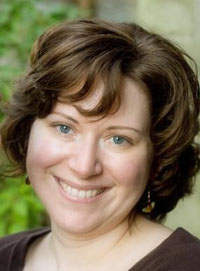 Brenda Matthews has over twenty years experience in radio interferometry and millimetre and submillimetre astronomy. Her research focus is the smallest components of planetary systems. She studies debris disks of dust and gas generated by the collisions between asteroids and comets around main sequence stars. She is also interested in star formation from cores through disks. Brenda has been an NRC staff member in the Millimetre Astronomy Group for the since 2008. Her PhD is from McMaster University and she was a BIMA postdoc in the UC Berkeley Radio Astronomy Laboratory before she came to NRC in 2004 as a Plaskett Fellow.
Brenda Matthews has over twenty years experience in radio interferometry and millimetre and submillimetre astronomy. Her research focus is the smallest components of planetary systems. She studies debris disks of dust and gas generated by the collisions between asteroids and comets around main sequence stars. She is also interested in star formation from cores through disks. Brenda has been an NRC staff member in the Millimetre Astronomy Group for the since 2008. Her PhD is from McMaster University and she was a BIMA postdoc in the UC Berkeley Radio Astronomy Laboratory before she came to NRC in 2004 as a Plaskett Fellow.
Gerald Schieven
 Gerald Schieven is the head of the Millimetre Astronomy Group at NRC
Herzberg in Victoria, where he leads the Canadian node of the North
American ALMA Regional Center. After obtaining his PhD in 1988 from the
University of Massachusetts at Amherst, he held post-doctoral positions
at Queen's (1988-1990), JPL (1990-1992) and DRAO (1992-1995). From
1995-2008 he was a support astronomer at the JCMT, before moving to
Victoria.
Gerald Schieven is the head of the Millimetre Astronomy Group at NRC
Herzberg in Victoria, where he leads the Canadian node of the North
American ALMA Regional Center. After obtaining his PhD in 1988 from the
University of Massachusetts at Amherst, he held post-doctoral positions
at Queen's (1988-1990), JPL (1990-1992) and DRAO (1992-1995). From
1995-2008 he was a support astronomer at the JCMT, before moving to
Victoria.
George Moellenbrock
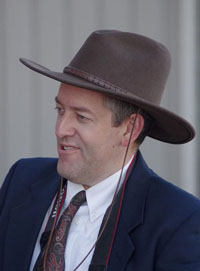 George Moellenbrock is a Scientist at the National Radio Astronomy Observatory in Socorro, NM (USA). A member of the CASA data reduction software development team, he concentrates mainly on visibility calibration capabilities and algorithms, and related user support. Over the course of his career, he has participated in the commissioning of HALCA (a Japanese space VLBI mission), EVLA, and ALMA. For ALMA's linear-basis feeds, he developed the heuristics and supporting CASA software for generalized instrumental polarization calibration. His scientific research interests include VLBI polarimetry of blazars, galactic structure via kilo-parsec scale radio parallax measurements with high-precision VLBI astrometry, and interferometry/synthesis calibration and imaging algorithms.
George Moellenbrock is a Scientist at the National Radio Astronomy Observatory in Socorro, NM (USA). A member of the CASA data reduction software development team, he concentrates mainly on visibility calibration capabilities and algorithms, and related user support. Over the course of his career, he has participated in the commissioning of HALCA (a Japanese space VLBI mission), EVLA, and ALMA. For ALMA's linear-basis feeds, he developed the heuristics and supporting CASA software for generalized instrumental polarization calibration. His scientific research interests include VLBI polarimetry of blazars, galactic structure via kilo-parsec scale radio parallax measurements with high-precision VLBI astrometry, and interferometry/synthesis calibration and imaging algorithms.
Alison Peck
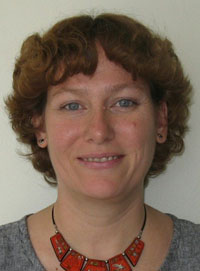 Alison Peck comes from a long background of interferometry of one sort
or another. Following her PhD at New Mexico Tech using VLBI, she had
postoctoral positions at the MPIfR in Bonn and at the
Harvard-Smithsonian Submillimeter Array, and then moved to Chile to
spend 5 years as Deputy Project Scientist for ALMA. Now back in North
America, Alison is the Science User Support Group Lead for NRAO, and
also coordinates the Student Programs. In addition, Alison has tried to
maintain an active science curriculum, focusing primarily on nearby
starburst galaxies and ULIRGs, as well as more distant submillimeter
galaxies.
Alison Peck comes from a long background of interferometry of one sort
or another. Following her PhD at New Mexico Tech using VLBI, she had
postoctoral positions at the MPIfR in Bonn and at the
Harvard-Smithsonian Submillimeter Array, and then moved to Chile to
spend 5 years as Deputy Project Scientist for ALMA. Now back in North
America, Alison is the Science User Support Group Lead for NRAO, and
also coordinates the Student Programs. In addition, Alison has tried to
maintain an active science curriculum, focusing primarily on nearby
starburst galaxies and ULIRGs, as well as more distant submillimeter
galaxies.
Mark Rawlings
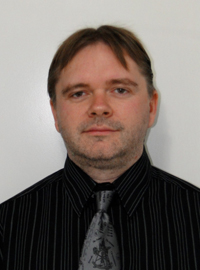 Mark Rawlings is currently a Scientist at the National Radio Astronomy Observatory in Charlottesville, VA (USA). Following his PhD at the University of Central Lancashire (UK), he first worked with ISO data at the University of Helsinki (Finland), and then as a Support Astronomer for UKIRT (USA). He subsequently spent more than three years in Chile as an ESO ALMA Operations Astronomer before transferring to Charlottesville. At NRAO, he now provides ALMA technical support and is also a member of the CASA data reduction software development team, acting as the Build and Test Group Lead. His scientific interests focus primarily on the physics and chemistry of the interstellar medium, with a particular emphasis on organic species.
Mark Rawlings is currently a Scientist at the National Radio Astronomy Observatory in Charlottesville, VA (USA). Following his PhD at the University of Central Lancashire (UK), he first worked with ISO data at the University of Helsinki (Finland), and then as a Support Astronomer for UKIRT (USA). He subsequently spent more than three years in Chile as an ESO ALMA Operations Astronomer before transferring to Charlottesville. At NRAO, he now provides ALMA technical support and is also a member of the CASA data reduction software development team, acting as the Build and Test Group Lead. His scientific interests focus primarily on the physics and chemistry of the interstellar medium, with a particular emphasis on organic species.